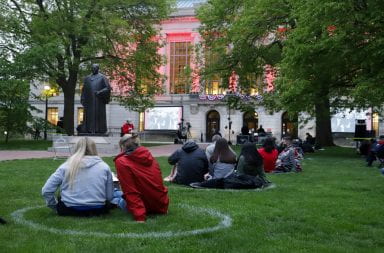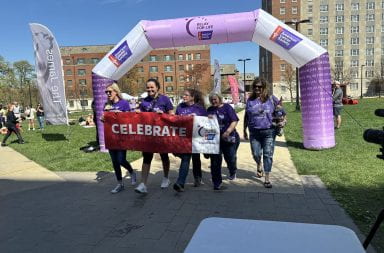
Applications to medical school have increase about 17 percent this year compared to last. Experts attribute the increase in applications to the coronavirus and racial disparities in the medical field. Credit: Courtesy of Kaplan
Unlike many plans COVID-19 has stunted, the pandemic may have inspired more doctors-to-be to apply to medical school.
Medical school applications have increased about 17 percent nationally with the application cycle still underway, according to the American Medical College Application Service. Increased flexibility in the application process and motivation from the pandemic and racial injustice may be the driving forces behind the surge, experts say.
Dr. Demicha Rankin, associate dean of admissions at Ohio State’s College of Medicine, said Ohio State has also seen an increase in medical school applications this year. She said the pandemic coupled with the movement for anti-racism could be motivating new applicants toward the medical field.
Rankin said even with a larger pool of applicants, Ohio State continues to rely on a holistic review process with a special emphasis on the impact of COVID-19 on a candidate’s life.
The medical school application typically opens in May each year with the last opportunity to take the Medical College Admission Test in September. Due to COVID-19 and the cancellation of the MCAT this spring, many medical schools extended the window to take and submit scores from the MCAT through January, Petros Minasi, senior director of pre-health programs for Kaplan, said.
A Kaplan survey found that 93 percent of medical school admissions officers indicated a more flexible application process this year due to COVID-19, including accepting pass/fail grades, moving interviews online and allowing students to explain how the pandemic impacted their lives.
“Some students were affected at home. Financial systems changed, living arrangements changed,” Petros said. “Medical schools have always placed a strong importance on holistic review in the application process, and with the impact of COVID-19, we found in the results that they were evaluating applicants even more holistically.”
Marisa Vislay, a fourth-year in biochemistry and external affairs chair for the First-Generation Pre-Medical Student Association at Ohio State, said the onset of COVID-19 brought a variety of challenges for pre-medicine students. She said she was scheduled to take the MCAT in April, but it ended up being pushed back to July. Vislay said some students had difficulty getting letters of recommendation.
Vislay said despite these setbacks, she thinks the pandemic and push for racial justice is driving the increase in medical school applications this year.
“It’s hard to be a student, be pre-med and just feel so helpless like you can’t do anything to make a difference,” Vislay said. “I’m sure that’s why a lot of people were like, ‘I’m not wasting any time, I want to do this as fast as I can. I want to make a difference as fast as I can.’”
Compared to white, non-Hispanic persons, COVID-19 hospitalization rates are 4.7 times higher among Black or African American persons, 5.3 times higher among American Indian or Alaska Native persons and 4.6 times higher among Hispanic or Latino persons, according to the Centers for Disease Control and Prevention website.
Despite increased competition this year, Rankin said students should not feel discouraged from applying. She said if a student isn’t admitted this year, she recommends they seek feedback on how they can improve their application for the next cycle.
“Where there’s a will, there’s a way. I understand that numerically, we can only accept so many students per institution, but I would encourage individuals to remain committed to their dreams and their passions,” Rankin said.
Rankin said she hopes the incoming class will diversify medicine, specifically among Black men, who represent only 3 percent of physicians. Black male enrollment in medical school decreased from 1978 to 2014, but racial and ethnic minorities are applying at a greater rate this year than last year, according to the American Medical Colleges website.
“I would hope that with the increased number of candidates that are applying to medical school, that there will be strides taken to ensure that we will be preparing and training a physician workforce that is going to be reflective of the population at large,” Rankin said.


